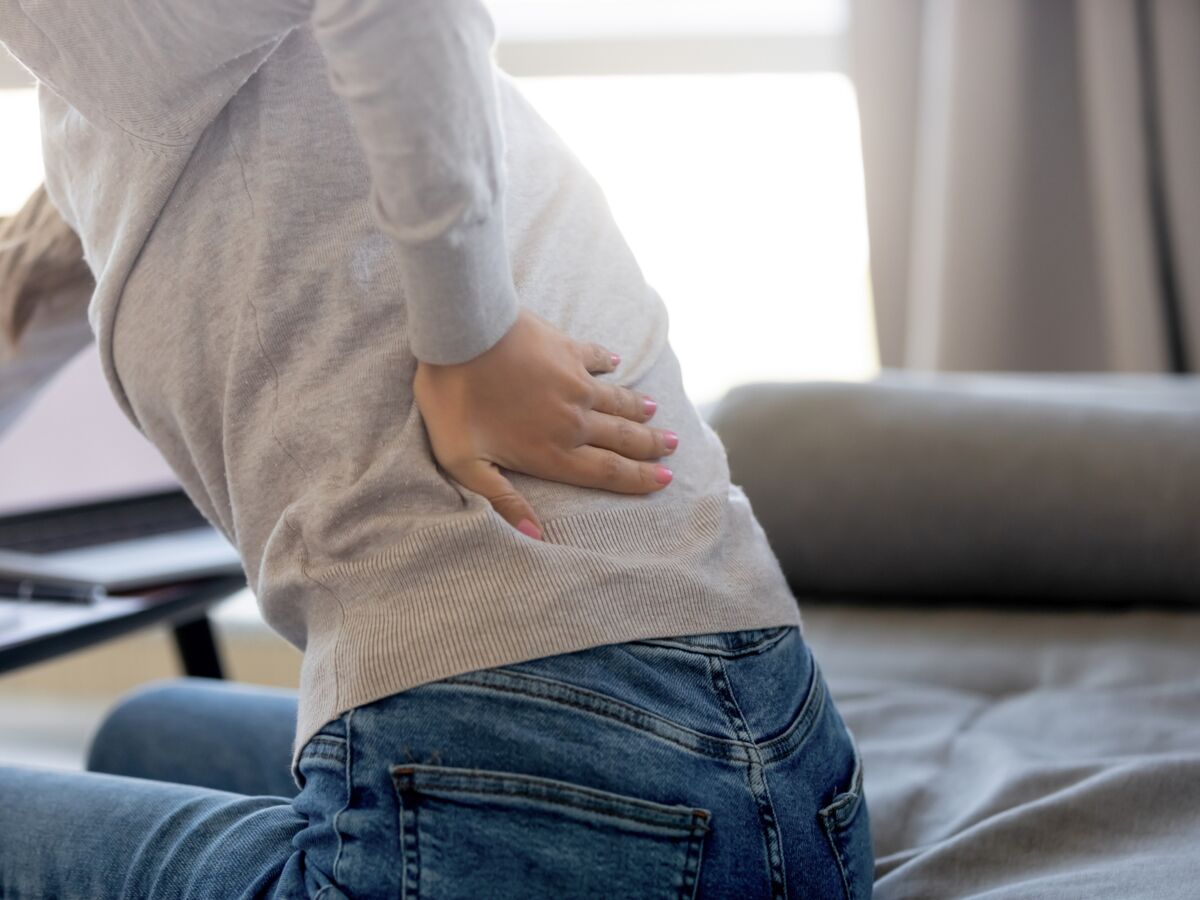Also called thoracolumbar hinge syndrome, Maigne syndrome is manifested by pain localized in the lower back or stomach. Poorly diagnosed, this pathology nevertheless constitutes one of the most common etiologies of back pain. How to recognize the signs of this syndrome? How is it treated?
1. What is Maigne syndrome?
Described for the first time in 1972 by the French rheumatologist Robert Maigne, the thoracolumbar hinge syndrome – as it was then called – brought together all the pain felt or projected at the junction between the end of the dorsal vertebrae and the beginning of the lumbar vertebrae. This specific area of the back, called the thoracolumbar hinge (T12-L1), is sometimes the site of pain that can extend to the hips and/or thighs. These are caused by irritation of the nerve structures that originate at that particular hinge. At this precise location, the vertebrae are not subject to the same type of mobility, which makes the nerves present much more sensitive. Indeed, the T12 vertebra is mobile and can rotate, while the L1 lumbar vertebra is, for its part, much more rigid.
In the majority of cases, Maigne syndrome results from an inappropriate posture. People who sit for a long time also have an increased risk of suffering from this pathology. Adopting a bad position over a long period of time will cause an intervertebral disturbance in the posterior part of the joint. However, other etiologies such as back osteoarthritis, intervertebral compression or even certain disc disorders can be the cause of Maigne syndrome.
2. What are the symptoms of Maigne syndrome?
Back pain represents the main clinical sign of Maigne syndrome. These are not necessarily felt at the exact level where they originate. In this context, we speak of referred pain, to describe painful sensations located at a distance, often along the path of the affected nerve. In the majority of cases, three distinct regions are likely to be affected:
- The lumbosacral, sacroiliac and/or lumbobuttock area: the pain felt in this region is often unilateral. They mainly occur during exercise. They represent the most frequently reported pain.
- The inguinal and/or pubic area: the syndrome can cause pain in the iliac fossa, genitals, or even the lower digestive tract in the absence of intestinal or gynecological disorders. They are caused by irritation of the anterior ilioinguinal branch or the genitofemoral nerve.
- The coxal zone: certain pains are localized at the level of a hip, sometimes suggesting tendinitis. We then speak of false or pseudo-hip pain to describe this pain which results from irritation of the lateral perforating branch of the skin.
3. How is Maigne syndrome diagnosed and treated?
The diversity of areas and symptoms potentially presented by the patient explains the difficulty in establishing the diagnosis of this syndrome for practitioners. Many affected people are thus victims of more or less long medical wandering which delays their care. Establishing the diagnosis of Maigne syndrome is essentially based on a thorough clinical examination combined with a detailed interview with the patient, in order to clearly identify their symptoms and the location of their pain. Although often recommended in the presence of back pain, performing x-ray examinations does not provide clues as to the nature of the pathology. However, they allowexclude other types of pathologies (French Chiropractic Association). To confirm his diagnosis, the practitioner can rely on different tests or manipulations:
- The crest point: located 8 cm from the midline at the iliac crest, this area can be very sensitive to manipulation.
- Lateral pressure at the thoracolumbar level: the doctor can exert pressure at this location in order to note the appearance – or not – of pain.
- The pinch-roll maneuver: this manipulation carried out at the level of the lower part of the abdomen or upper-inner thigh makes it possible to detect possible pain.
The management of Maigne syndrome will depend on many factors (age, intensity of pain, location, etc.) and must, as such, be personalized. Initially, the therapeutic objective will be to relieve the pain felt. For this, doctors have several medications available: analgesics, anti-inflammatories, infiltrations, etc. At the same time, physiotherapy or osteopathy sessions are often required in order to restore better mobility at the level of the thoracolumbar hinge and, thus, to relieve nervous structures subjected to severe strain.
Sources
French Chiropractic Association, French Society of Orthopedic Manual Medicine and Medical Osteopathy
Read also :
⋙ Lumbar osteoarthritis: the best treatments to relieve lumbar osteoarthritis
⋙ Low back pain: why do I have lower back pain?
⋙ Which specialists should you consult for back pain?
